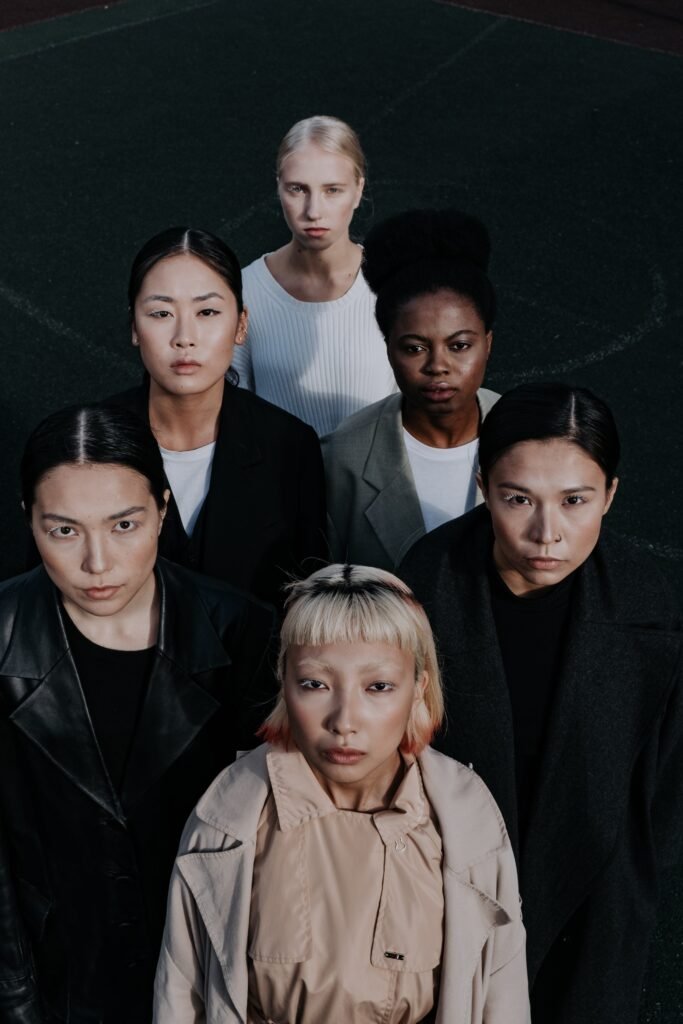If you’re an avid boat owner, you know that keeping your vessel running smoothly is crucial for a successful day out on the water. Whether you’re seeking improved performance, increased fuel efficiency, or enhanced reliability, boat engine upgrades can provide the solution. In this article, we’ll explore the most sought-after upgrades that are currently in high demand among boat enthusiasts. From more powerful engines to advanced propulsion systems, we’ll explore the options that can take your boating experience to new heights. So, buckle up and get ready to embark on an exciting journey through the world of boat engine upgrades!
1. Increasing Horsepower
When it comes to increasing the horsepower of your boat, there are several options to consider. Each of these upgrades can give your boat a significant boost in power and performance, allowing you to enjoy a faster and more exhilarating ride on the water.
1.1. Changing the Propeller
One of the easiest ways to increase the horsepower of your boat is by changing the propeller. By selecting a propeller with a higher pitch or a different design, you can optimize the performance of your engine and achieve higher speeds. The right propeller choice will depend on factors such as boat size, weight, and desired speed.
1.2. Upgrading the Fuel System
upgrading the fuel system of your boat can have a noticeable impact on its horsepower. Installing larger fuel injectors, a high-flow fuel pump, or a performance fuel pressure regulator can provide your engine with a more consistent and efficient fuel supply, resulting in increased horsepower and improved acceleration.
1.3. Installing a Supercharger or Turbocharger
Installing a supercharger or turbocharger is a popular choice for boat owners looking to significantly increase the horsepower of their engines. These forced-induction systems compress the intake air, allowing more air and fuel mixture into the combustion chamber, resulting in a substantial power boost. However, it’s important to ensure that your engine is compatible with and can handle the increased stress and heat generated by these systems.
1.4. Upgrading the Air Intake System
Upgrading the air intake system is another effective way to increase horsepower. By replacing the factory air intake with a high-performance cold air intake system or a ram air intake system, you can improve the airflow into the engine, resulting in increased power and torque. These systems are designed to reduce air restriction and provide a cooler, denser air charge for improved combustion.
1.5. Opting for a Performance Exhaust System
Upgrading to a performance exhaust system can not only enhance the sound of your boat but also increase horsepower. These systems are designed to improve exhaust flow, reduce restriction, and optimize the engine’s efficiency. By allowing the engine to expel exhaust gases more efficiently, a performance exhaust system can unlock additional horsepower, improve throttle response, and provide a deeper and more aggressive sound.
2. Enhancing Fuel Efficiency
In addition to increasing horsepower, improving fuel efficiency is a key consideration for many boat owners. Enhancing fuel efficiency not only helps reduce fuel costs but also allows for longer trips without the need for frequent refueling. Here are some effective upgrades to consider for enhancing fuel efficiency.
2.1. Upgrading to a Four-Stroke Engine
Upgrading to a four-stroke engine can result in significant fuel efficiency improvements compared to traditional two-stroke engines. Four-stroke engines are designed to burn fuel more cleanly and efficiently, leading to reduced fuel consumption. Additionally, they produce lower emissions and provide a smoother and quieter operation, resulting in a more enjoyable boating experience.
2.2. Installing Fuel Injection Systems
Installing a fuel injection system in your boat can greatly enhance fuel efficiency. Fuel injection systems deliver fuel directly into the combustion chamber in a precisely controlled manner, ensuring optimal fuel-air mixture and combustion. This results in better fuel economy, improved throttle response, and reduced emissions compared to carbureted engines.
2.3. Optimizing the Engine’s Compression Ratio
Optimizing the engine’s compression ratio is an effective way to improve fuel efficiency. A higher compression ratio promotes more efficient combustion, allowing the engine to extract more energy from each unit of fuel. However, it’s important to ensure that your engine is compatible with higher compression ratios and that the necessary modifications are made to prevent issues such as knocking or overheating.
2.4. Upgrading to Direct Fuel Injection
Direct fuel injection is a technology that injects fuel directly into the combustion chamber, resulting in improved fuel atomization and combustion efficiency. This upgrade can lead to better fuel economy and increased power output. Direct fuel injection systems also promote cleaner emissions and reduced carbon buildup in the engine.
2.5. Adding an Electronic Control Module (ECM)
Adding an electronic control module to your boat’s engine can help optimize fuel efficiency. An ECM is designed to monitor and adjust various engine parameters in real-time, such as fuel injection timing and ignition timing, to ensure optimal performance and fuel economy. By fine-tuning these parameters, an ECM can help maximize fuel efficiency and overall engine performance.

3. Improving Reliability and Durability
Ensuring the reliability and durability of your boat’s engine is crucial for a worry-free boating experience. Upgrading certain components and systems can help enhance the longevity and reliability of your engine. Here are some key upgrades to consider.
3.1. Upgrading to Stainless Steel Exhaust Components
Upgrading to stainless steel exhaust components can significantly improve the durability and longevity of your boat’s exhaust system. Stainless steel is highly resistant to corrosion and can withstand the harsh marine environment, ensuring that your exhaust system remains in good condition for years to come. Additionally, stainless steel exhaust components can also enhance performance by reducing backpressure and improving exhaust flow.
3.2. Adding a Cooling System Upgrade
Adding a cooling system upgrade can help regulate engine temperature and prevent overheating, especially during long periods of operation or in warm climates. Upgrading to a more efficient marine cooling system, such as a larger capacity heat exchanger or a water-cooled oil cooler, can help dissipate heat more effectively and ensure the engine operates within the optimal temperature range.
3.3. Upgrading Electrical Systems
Upgrading your boat’s electrical systems is vital for improving reliability and durability. Upgrading to marine-grade wiring, connectors, and switches can help prevent corrosion and ensure a reliable electrical connection. Additionally, consider adding a secondary battery or a battery isolation system to provide backup power and prevent accidental discharge.
3.4. Opting for a High-Performance Ignition System
An upgraded ignition system can greatly improve the reliability and performance of your boat’s engine. High-performance ignition systems, such as electronic ignition or capacitive discharge ignition (CDI), provide a more consistent spark and faster spark delivery, resulting in improved starting, smoother operation, and enhanced fuel efficiency. These systems also help reduce the risk of misfire or engine stalling.
3.5. Installing an Engine Monitoring System
Installing an engine monitoring system allows you to keep a close eye on crucial engine parameters and diagnose potential issues before they become major problems. These systems can monitor parameters such as engine temperature, oil pressure, fuel flow, and battery voltage, providing real-time data and alerts. By staying informed about your engine’s condition, you can take timely action to prevent damage and ensure optimal performance.
4. Enhancing Handling and Maneuverability
Enhancing the handling and maneuverability of your boat can greatly improve your boating experience and make navigating in various conditions easier. Here are some upgrades to consider for better handling and maneuverability.
4.1. Adding a Trim Tab System
Adding a trim tab system to your boat can significantly improve its handling and stability. Trim tabs are adjustable surfaces located on the transom of the boat, allowing you to adjust the boat’s trim angle and optimize the hull’s running attitude. This helps improve fuel efficiency, reduce bow rise during acceleration, and enhance overall stability and control.
4.2. Installing Hydraulic Steering
Installing hydraulic steering provides a smoother and more responsive steering experience compared to traditional mechanical steering systems. Hydraulic steering allows for effortless steering control, improves maneuverability, and enhances the overall safety of your boat. Additionally, hydraulic steering systems can be customized to match the specific needs and preferences of your boat.
4.3. Upgrading to a Jet Drive System
Upgrading to a jet drive system can offer several advantages in terms of handling and maneuverability. Jet drives eliminate the need for a traditional propeller, reducing the risk of damage in shallow waters and improving safety. These systems also provide enhanced low-speed maneuverability, allowing for precise handling in tight spaces or when docking.
4.4. Using a Trolling Motor
If you frequently engage in activities such as fishing, a trolling motor can be a valuable addition to your boat. Trolling motors provide quiet and precise propulsion at low speeds, allowing you to maintain control and maneuverability while minimizing disturbance of the water. This is particularly useful when fishing in calm waters or near structures such as docks or vegetation.
4.5. Implementing a Bow Thruster
Implementing a bow thruster can greatly enhance the maneuverability of your boat, especially in challenging docking situations or when navigating in tight spaces. A bow thruster is a separate propulsion unit located in the bow of the boat, providing lateral thrust to assist in steering and maneuvering. Adding a bow thruster can make docking and maneuvering in confined areas much easier and less stressful.

5. Upgrading the Cooling System
The cooling system of your boat plays a crucial role in maintaining optimal engine temperature and ensuring reliable performance. Upgrading the cooling system can improve efficiency and prevent overheating, particularly in demanding operating conditions. Here are some cooling system upgrades to consider.
5.1. Installing a Raw Water Cooling System
Installing a raw water cooling system can be beneficial for boats operated in saltwater or freshwater environments. This system uses raw water from the surrounding environment to cool the engine, minimizing the risk of overheating and reducing the potential for corrosion. Regular maintenance, such as flushing the system with fresh water, is necessary to prevent the buildup of salt or other contaminants.
5.2. Upgrading to a Heat Exchanger Cooling System
Heat exchanger cooling systems are commonly used in boats to prevent saltwater or freshwater from directly contacting the engine’s internal components. This system uses a heat exchanger to transfer heat from the engine to a separate coolant circuit, which is then cooled by raw water. Upgrading to a heat exchanger cooling system can enhance the longevity of your engine by minimizing the corrosive effects of saltwater or freshwater.
5.3. Implementing a Closed Cooling System
Implementing a closed cooling system is an effective way to protect your boat’s engine from the corrosive effects of saltwater or freshwater. In a closed cooling system, a mixture of coolant and antifreeze circulates through the engine, transferring heat away from the internal components. This system isolates the engine from direct contact with raw water and provides superior corrosion protection, ensuring reliable performance and longevity.
5.4. Opting for a Sea Water Pump Upgrade
Upgrading the sea water pump can significantly improve the cooling efficiency of your engine. A high-performance sea water pump provides a higher flow rate, ensuring a consistent supply of cooling water to the engine. This helps prevent overheating and allows the engine to operate at optimal temperatures, improving overall performance and reliability.
5.5. Adding a High-Performance Radiator
A high-performance radiator is a valuable addition to the cooling system of certain boats, especially those with high-powered engines. These radiators are designed to dissipate heat more efficiently and eliminate the risk of overheating. By upgrading to a high-performance radiator, you can ensure that your engine remains cool even under demanding conditions, reducing the risk of performance issues and premature component failure.
6. Implementing Advanced Control Systems
Implementing advanced control systems can greatly enhance the overall control and maneuverability of your boat. These systems utilize modern technology to provide precise control and ease of operation, allowing you to navigate with confidence. Here are some advanced control systems to consider.
6.1. Upgrading to Electronic Throttle Controls
Upgrading to electronic throttle controls replaces traditional mechanical cables with electronic sensors and controls, resulting in more accurate and responsive throttle input. Electronic throttle controls provide smoother acceleration and deceleration, precise control, and reduced maintenance compared to mechanical systems. Additionally, these systems can offer features like throttle synchronization, making boating even more enjoyable.
6.2. Installing a Joystick Control System
Installing a joystick control system can revolutionize the way you maneuver your boat. Joystick control systems combine the inputs from multiple propellers, thrusters, and steering systems to provide effortless and intuitive control. With a joystick, you can easily maneuver your boat in any direction, spin it on its axis, or hold it steady in challenging situations, making docking and close-quarter maneuvering a breeze.
6.3. Adding a Fly-by-Wire System
A fly-by-wire system replaces traditional mechanical linkages with electronic controls, allowing for precise and instantaneous control of various boat systems. By eliminating the need for physical connections, these systems reduce friction and mechanical resistance, resulting in smoother operation and improved responsiveness. Fly-by-wire systems can be utilized for throttle control, steering, shift and throttle synchronization, and other functions.
6.4. Opting for a Remote Control System
Opting for a remote control system can offer added convenience and flexibility while operating your boat. Remote control systems allow you to control various boat functions, such as engine starting, stopping, and shifting, from a remote location on your boat. This is particularly useful when operating solo or when controlling multiple engines or systems simultaneously, making boating more enjoyable and effortless.
6.5. Implementing a Propulsion System Integration
Implementing a propulsion system integration combines various control systems, such as throttle controls, steering controls, and joystick controls, into a unified and integrated system. This allows for seamless communication and coordination between different components and enhances the overall control and maneuverability of your boat. By integrating the propulsion system, you can achieve precise and effortless control, ensuring a smooth and enjoyable boating experience.

7. Enhancing Sound and Vibration Control
Enhancing sound and vibration control can greatly improve the comfort and enjoyment of your boating experience, reducing fatigue and increasing overall satisfaction. Here are some upgrades to consider for better sound and vibration control.
7.1. Adding Sound-Deadening Materials
Adding sound-deadening materials to your boat’s engine compartment can significantly reduce engine noise and vibrations. These materials are designed to absorb and dampen sound waves, preventing them from propagating into the cabin area. By reducing noise levels, you can enjoy a quieter and more comfortable ride, allowing for better communication and relaxation on board.
7.2. Installing Engine Mounts and Isolators
Installing engine mounts and isolators can help further reduce engine vibrations and minimize their transmission to the rest of the boat. Engine mounts and isolators are designed to absorb and isolate vibrations, preventing them from being transmitted to the hull or other components. By reducing vibrations, you can enjoy a smoother and more comfortable ride, while also minimizing the risk of fatigue and potential component damage.
7.3. Opting for a Vibration Dampening System
A vibration dampening system is specifically designed to counteract and minimize vibrations produced by the engine or other components. These systems utilize various techniques, such as active vibration control or tuned mass dampers, to reduce unwanted vibrations. By implementing a vibration dampening system, you can enjoy a smoother and more balanced ride, enhancing comfort and reducing the risk of fatigue.
7.4. Upgrading to a Quieter Exhaust System
Upgrading to a quieter exhaust system can greatly reduce the noise levels on your boat, providing a more enjoyable and peaceful boating experience. Quieter exhaust systems utilize advanced muffler technology and insulation materials to minimize noise emissions without sacrificing performance. By reducing exhaust noise, you can communicate more easily with your fellow passengers and nearby boats, and also minimize disturbances to the marine environment.
7.5. Implementing Anti-Cavitation Measures
Implementing anti-cavitation measures can help reduce noise and vibrations caused by cavitation, a phenomenon that occurs when water vapor bubbles form and collapse around the propeller. Anti-cavitation measures can include modifying the propeller design, improving water flow around the propeller, or installing specialized anti-cavitation plates or fins. By minimizing cavitation, you can enjoy a quieter and smoother ride, reducing the overall noise levels and vibrations on your boat.
8. Improving Safety and Navigation
Improving safety and navigation is essential for a worry-free and enjoyable boating experience. Upgrading certain systems and adding advanced navigation equipment can enhance the safety, awareness, and overall navigation capabilities of your boat. Here are some upgrades to consider for improved safety and navigation.
8.1. Upgrading the Navigation System
Upgrading the navigation system of your boat can greatly enhance your ability to navigate the waterways safely and efficiently. Consider upgrading to a modern GPS navigation system that provides accurate position tracking, real-time speed and heading information, and detailed charts of water bodies. Additionally, look for systems that offer advanced features like automatic route planning, depth sounders, and collision avoidance capabilities.
8.2. Installing a Radar System
Installing a radar system can greatly improve your situational awareness and help you navigate safely, even in low visibility conditions. Radar systems use radio waves to detect and track objects, providing you with valuable information about the presence of other boats, navigation aids, and potential hazards. This enhancement is particularly useful during fog, darkness, or heavy rain, allowing you to safely navigate and avoid collisions.
8.3. Adding a GPS Tracking System
Adding a GPS tracking system to your boat can provide valuable peace of mind and enhance overall safety. GPS tracking systems allow you to monitor the location and movement of your boat in real-time, providing you with important information in case of theft or emergency situations. These systems often include features like geofencing, which alert you if your boat travels outside a predefined area, and remote monitoring via smartphone or computer.
8.4. Implementing a Collision Avoidance System
Implementing a collision avoidance system can greatly improve the safety of your boat by alerting you to potential collision risks. These systems utilize advanced sensors and algorithms to detect and track nearby boats or obstacles, providing visual and audible alerts if a potential collision is detected. Collision avoidance systems can help you navigate crowded waterways or detect other boats in blind spots, enhancing safety and reducing the risk of accidents.
8.5. Opting for Enhanced Lighting Systems
Opting for enhanced lighting systems can greatly improve visibility and safety during nighttime or low-light conditions. Consider upgrading to LED navigation lights, which are brighter and more energy-efficient compared to traditional incandescent lights. Additionally, adding deck lights, underwater lights, or spotlights can provide better illumination for navigation, docking, or simply enjoying a well-lit boat environment.

9. Upgrading the Electrical System
Upgrading the electrical system of your boat is crucial for reliability, safety, and maintaining a sufficient power supply for various onboard systems. Here are some key electrical system upgrades to consider.
9.1. Installing Upgraded Batteries
Installing upgraded batteries can provide a more reliable and longer-lasting power source for your boat’s electrical systems. Consider upgrading to deep-cycle marine batteries, which are specifically designed for marine applications and offer better performance and durability. Additionally, consider adding a battery management system or charging regulator to ensure optimal battery charging and prevent overcharging or deep discharge.
9.2. Upgrading the Alternator
Upgrading the alternator of your boat’s charging system can provide a more efficient and higher-output charging capability. High-output alternators can replenish batteries more quickly, allowing for longer operating times before the need for recharging. Additionally, these alternators can handle the power demands of various onboard systems, ensuring a stable electrical supply regardless of the load.
9.3. Adding a Solar Charging System
Adding a solar charging system to your boat can provide a renewable and sustainable source of electrical power. Solar panels can harness the energy of the sun and convert it into usable electricity, helping to charge batteries and power various onboard systems. Solar charging systems are particularly useful for boats that spend extended periods at anchor or in moorings, allowing you to harness the abundant solar energy and reduce the reliance on engine-driven charging systems.
9.4. Implementing a Generator System
Implementing a generator system can provide a reliable and independent source of electrical power for your boat. Generators can produce electricity on-demand, ensuring a stable power supply even when away from shore power or under heavy electrical load. Consider selecting a generator that matches the power requirements of your boat, taking into account the various electrical systems, appliances, and devices that need to be powered.
9.5. Opting for LED Lighting
Opting for LED lighting throughout your boat can provide several advantages over traditional incandescent or fluorescent lights. LED lights are highly energy-efficient, producing more light per watt and consuming significantly less power than traditional lighting options. They also have a longer lifespan, produce minimal heat, and are more resistant to vibrations and impact, making them a safer and more reliable lighting solution.
10. Customizing the Aesthetics
Customizing the aesthetics of your boat allows you to personalize its appearance and create a unique and eye-catching vessel. While aesthetics may not directly affect performance or functionality, they play a crucial role in enhancing your enjoyment and pride of ownership. Here are some ways to customize the aesthetics of your boat.
10.1. Upgrading Upholstery and Seating
Upgrading the upholstery and seating of your boat can have a significant impact on its overall appearance and comfort. Consider replacing worn-out or outdated upholstery with high-quality marine-grade materials that are resistant to UV damage, mold, and mildew. Additionally, upgrading to more comfortable and stylish seating options can enhance the comfort and enjoyment of your boating experience.
10.2. Installing a Custom Paint Job
Installing a custom paint job is a great way to make your boat stand out on the water. Custom paint jobs allow you to express your personal style and preferences, whether it’s through bold and vibrant colors, intricate designs, or unique graphics. Work with a professional marine painter to achieve a high-quality and durable finish that will turn heads and make your boat the envy of others.
10.3. Adding Graphics and Decals
Adding graphics and decals to your boat is a cost-effective and versatile way to customize its appearance. Whether you want to display your boat’s name, your favorite sports team logo, or a unique design, graphics and decals can be easily applied to various surfaces. They can be tailored to your preferences and easily removed or replaced if desired, allowing you to change the look of your boat whenever you want.
10.4. Implementing Interior Lighting Systems
Implementing interior lighting systems can greatly enhance the ambiance and functionality of your boat’s interior. Consider adding LED strip lights or overhead lighting fixtures in different areas of your boat, such as the cabin, galley, or head. These lights can provide illumination for various activities, create a warm and inviting atmosphere, and accentuate the interior design elements of your boat.
10.5. Opting for Custom Flooring
Opting for custom flooring can significantly transform the look and feel of your boat’s interior. Consider replacing worn-out carpeting with high-quality marine-grade flooring options, such as synthetic teak, vinyl, or marine-grade carpeting. These options are not only more durable and easier to maintain but also provide a luxurious and stylish appearance that can elevate the overall aesthetic of your boat.
In conclusion, upgrading your boat’s engine can bring about a range of benefits, from increased horsepower and fuel efficiency to improved reliability, durability, handling, and safety. By carefully considering the various upgrades available, you can tailor your boat’s performance and aesthetics to suit your individual needs and preferences, ensuring a more enjoyable and satisfying boating experience. Whether you choose to focus on increasing power and speed or enhancing comfort and style, these sought-after boat engine upgrades offer a wealth of possibilities for maximizing your time on the water.


